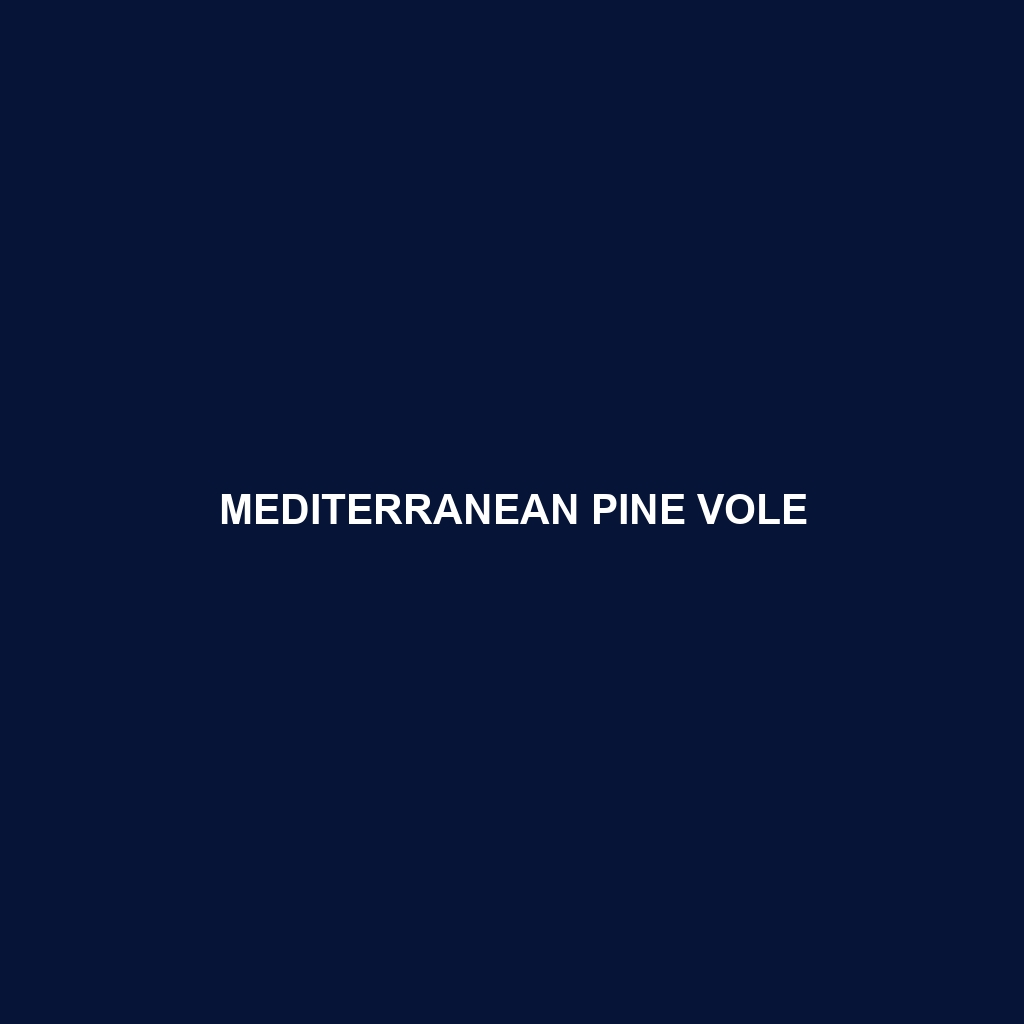Mediterranean Pine Vole
Common Name: Mediterranean Pine Vole
Scientific Name: Microtus duodecimcostatus
Habitat
The Mediterranean Pine Vole is primarily found in the Mediterranean region, particularly in countries such as Spain, Italy, and Greece. These voles inhabit grassy meadows, forest edges, and shrublands, often favoring areas with abundant vegetation and soft soil that allows easy burrowing. They thrive in moist, temperate climates, which support their dense foliage habitat and provide ample resources for survival.
Physical Characteristics
Adult Mediterranean Pine Voles typically measure between 12 to 15 cm (4.7 to 5.9 inches) in length, with a tail that is relatively short, often measuring less than 4 cm. They possess a rounded body covered in soft, dense fur that is usually a rich brown or grayish-brown, which blends well with the forest floor. Their fur is lighter on the underside, offering a degree of camouflage. Distinctively, they have small, round ears and short limbs, which contribute to their burrowing ability.
Behavior
Mediterranean Pine Voles are primarily nocturnal and are known for their burrowing behavior. They create extensive tunnel systems that can extend up to several meters deep, allowing them to escape predators and access food sources. These voles are solitary beings, yet they may engage in social behaviors during mating seasons. Their communication involves a range of vocalizations and scent markings to establish territory.
Diet
The diet of the Mediterranean Pine Vole is herbivorous, primarily consisting of roots, seeds, and tender shoots of grasses and herbaceous plants. They are particularly fond of the seeds of wildflowers and other native vegetation. Their feeding habits play a crucial role in local plant ecology, as they help in seed dispersal and plant health through their consumption patterns.
Reproduction
The breeding season for Mediterranean Pine Voles typically occurs in spring and summer, with gestation lasting about 21 to 23 days. Females generally give birth to litters of four to six young, which are born blind and hairless. As they mature, young voles begin to venture out of the nest within a few weeks, gaining independence and joining the population.
Conservation Status
The Mediterranean Pine Vole is currently classified as vulnerable due to habitat loss and degradation caused by agricultural expansion and urban development. Conservation efforts are necessary to ensure the survival of this species, focusing on habitat preservation and restoration initiatives.
Interesting Facts
A fascinating feature of the Mediterranean Pine Vole is its ability to cleanly navigate through its underground tunnels, making it a master of evasion against predators. Additionally, their populations are sensitive to climatic changes, illustrating their reliance on stable environmental conditions for survival.
Role in Ecosystem
Mediterranean Pine Voles play a crucial role in their ecosystem as both herbivores and prey. By feeding on plant roots and seeds, they influence vegetation patterns and contribute to soil health. Furthermore, they serve as a significant food source for various predators, including birds of prey and small mammals, thereby maintaining the ecological balance in their habitats.
